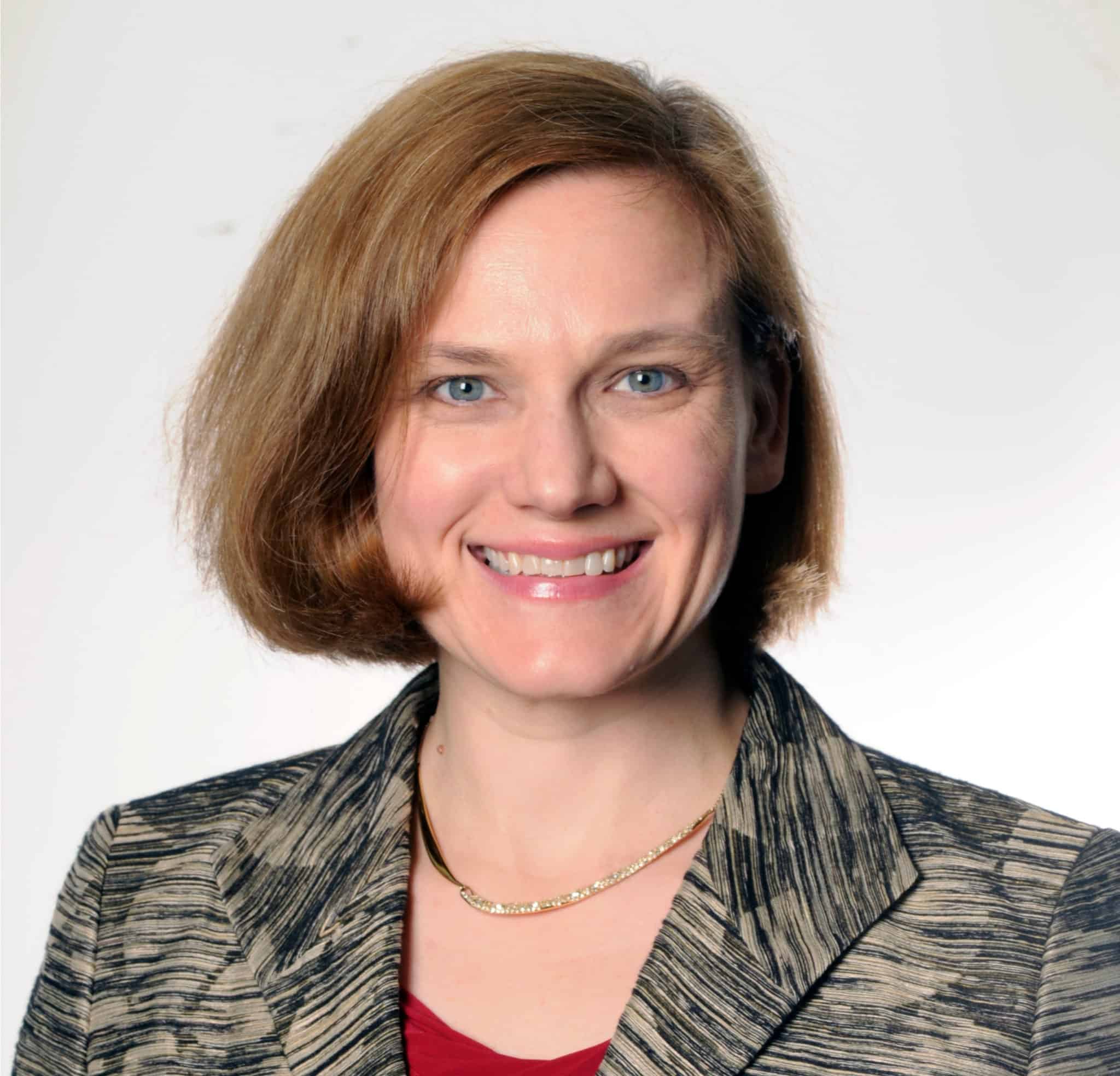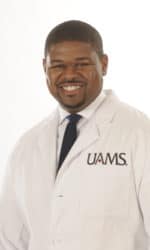View Larger Image

Erika Petersen, M.D.
Diabetic Pain Study at UAMS Enrolling Participants to Test Spinal Cord Stimulation Device
| People with chronic painful diabetic neuropathy are being enrolled in a University of Arkansas for Medical Sciences (UAMS) research study of a spinal cord stimulation device designed to reduce the pain.
Led at UAMS by Erika Petersen, M.D., a neurosurgeon and researcher, the study is part of a clinical trial being conducted at sites across the United States.
“Implanted spinal cord stimulation devices have been shown to relieve chronic pain, but this study is the first to test a device’s effectiveness when used specifically for continuous diabetic neuropathy pain in the legs and feet,” said Petersen, director of Functional and Restorative Neurosurgery and associate professor in the UAMS College of Medicine.
About a quarter of Americans with diabetes have painful diabetic neuropathy, according to the national Centers for Disease Control and Prevention. In Arkansas, where an estimated 363,000 people have type 2 diabetes, about 73,000 of those residents (20 percent) would be expected to have painful diabetic peripheral neuropathy. The number could be higher — a National Institutes of Health-funded study in five rural Arkansas counties concluded that diabetic peripheral neuropathy was alarmingly underdiagnosed.
“Diabetic peripheral neuropathy is a debilitating, painful disease for which there are few effective treatments,” said Johnathan Goree, M.D., a sub-investigator on the study and director of the Chronic Pain Division of the Department of Anesthesiology in the UAMS College of Medicine. “If this spinal cord stimulation system proves to be effective, it could provide excellent pain control without many of the side effects of opioid medications.”
The device, Senza® Spinal Cord Stimulation system, was developed by Nevro, a medical device company based in Redwood, Calif. It works by sending electrical pulses to interrupt pain signals and provide pain relief.
The system’s implantable pulse generator is placed under the skin of the abdomen or buttocks along with the leads – thin wires that deliver the electrical pulses from the pulse generator to the spinal cord.
Study participants will be randomly placed in one of two groups: One providing conventional medical treatments, such as medications and physical therapy; and the other using the spinal cord stimulation device.
Eligibility requirements for participating in the study include:
- A diagnosis of painful diabetic neuropathy of the feet and/or legs
- Having tried standard treatments
- Be 22 years of age or older
Those interested in learning if they are eligible may contact the UAMS Translational Research Institute study coordinator, 501-398-8622.
The project described is supported by the Translational Research Institute (TRI), grant 1U54TR001629-01A1 through the National Center for Advancing Translational Sciences of the National Institutes of Health (NIH). The content is solely the responsibility of the authors and does not necessarily represent the official views of the NIH.
UAMS is the state’s only health sciences university, with colleges of Medicine, Nursing, Pharmacy, Health Professions and Public Health; a graduate school; hospital; a main campus in Little Rock; a Northwest Arkansas regional campus in Fayetteville; a statewide network of regional campuses; and seven institutes: the Winthrop P. Rockefeller Cancer Institute, Jackson T. Stephens Spine & Neurosciences Institute, Harvey & Bernice Jones Eye Institute, Psychiatric Research Institute, Donald W. Reynolds Institute on Aging, Translational Research Institute and Institute for Digital Health and Healthcare Innovation. It is the only adult Level 1 trauma center in the state. UAMS has 2,727 students, 870 medical residents and five dental residents. It is the state’s largest public employer with more than 10,000 employees, including 1,200 physicians who provide care to patients at UAMS, its regional campuses, Arkansas Children’s Hospital, the VA Medical Center and Baptist Health. Visit www.uams.edu or www.uamshealth.com. Find us on Facebook, Twitter, YouTube or Instagram.
